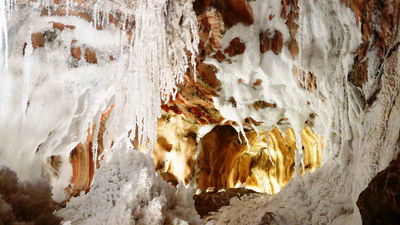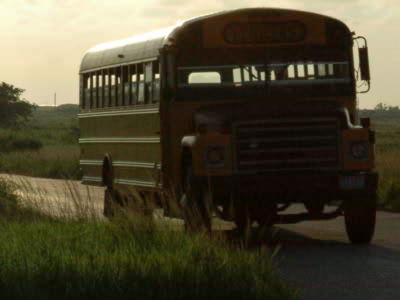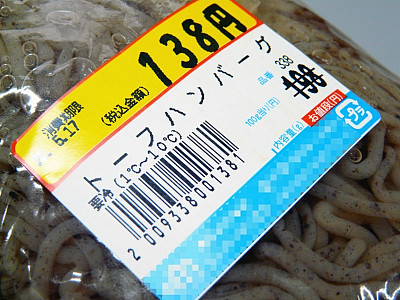I went to the Kinseizan Fossil Museum, where the inside and outside of the building are covered in fossils. The admission fee is 100 yen, and the museum is packed with real fossils.

I went to the Kinseizan Fossil Museum in Ogaki, Gifu Prefecture, which has an admission fee of 100 yen. There were fossils on display even before entering the building, and the inside of the building was also lined with fossils, giving it a very interesting museum feel.
Kinshozan Fossil Museum | Ogaki City Official Website / Water City Ogaki
The Kinshozan Fossil Museum is a museum located on Kinshozan in Ogaki City, Gifu Prefecture, and displays many fossils found on Kinshozan. If you are traveling by car, it takes about 12 minutes from the Ogaki Nishi Interchange on the Tokaido Expressway. If you are using public transportation, it is a 15-minute walk from JR Minoakasaka Station or a 5-minute walk from the Kokuzo-guchi bus stop on the Meihan Kintetsu Bus.
Arrived at Kinshozan Fossil Museum.
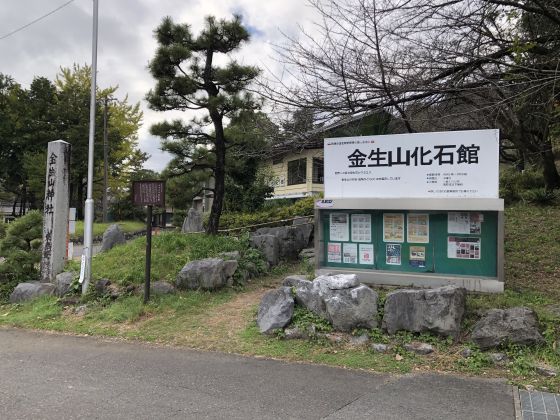
This is what the building looks like from the front.
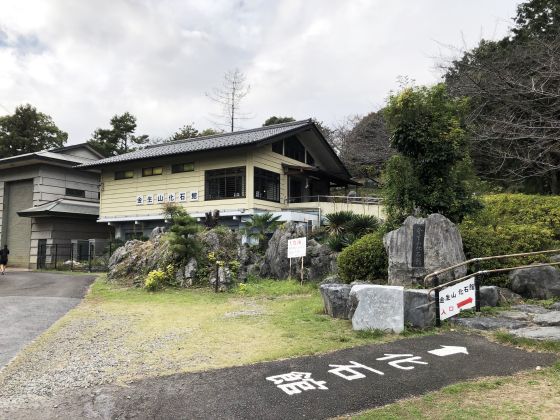
A large stone cut at a right angle is placed in front of the monument.
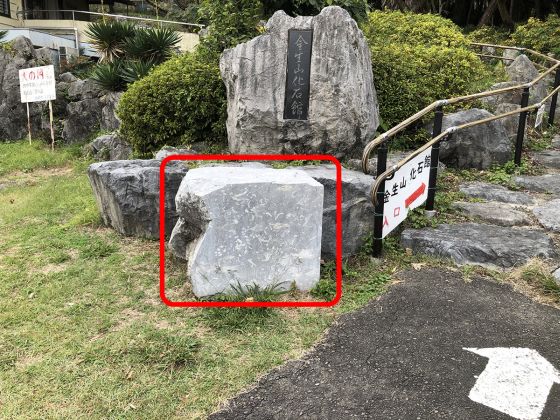
Upon closer inspection, you can see a distinctive pattern on the surface of the stone.
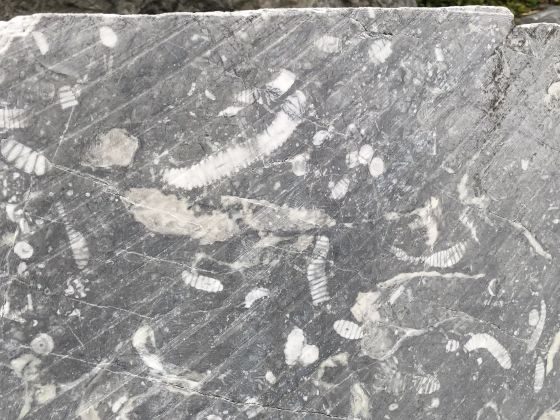
There was a note on the side of the rock. It said that this rock contains fossils of 'Scatinella' and ' Crinoidea '. I found fossils before I could even see the entrance.
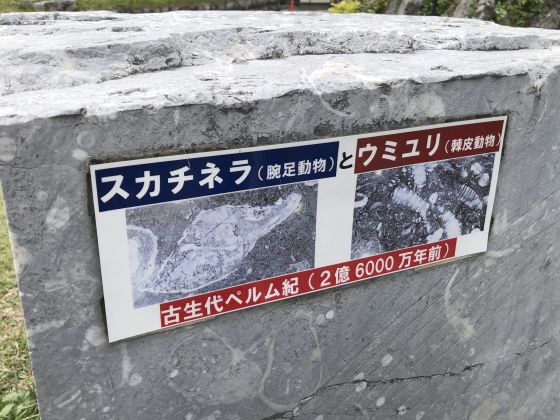
As I walked up the slope leading to the entrance, I spotted a sign that said, 'Please stop for a moment!'
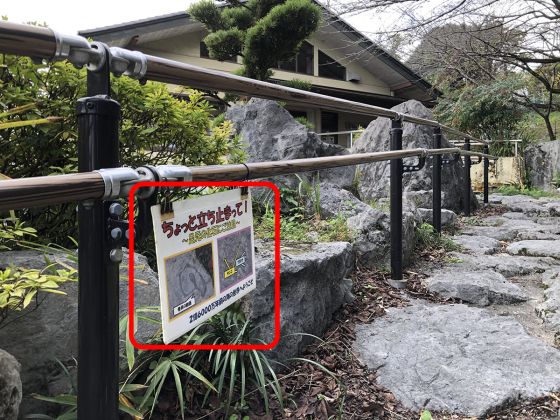
Apparently there are fossils at the base.
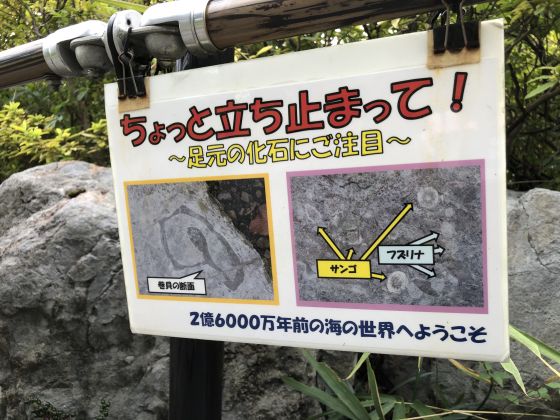
The stones underfoot are not particularly protected and are exposed to the elements.
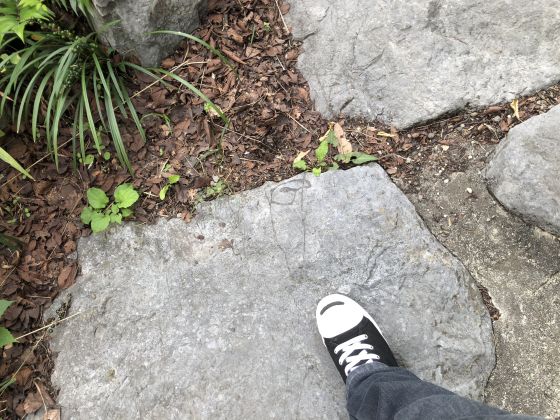
Upon closer inspection, I discovered a mysterious pattern. According to the information board, this is a fossil of the side of a snail shell.
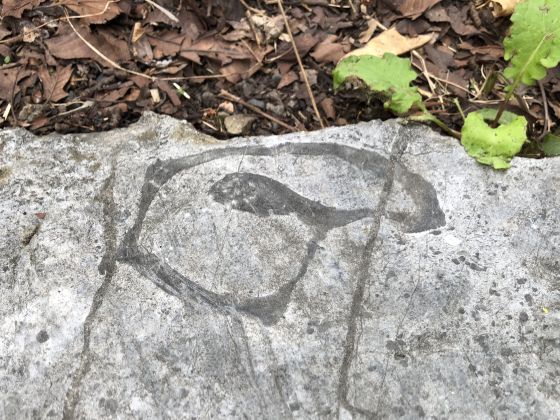
I found a large rock.
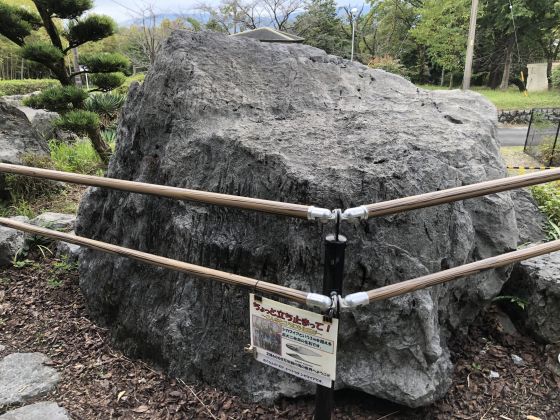
There are many vertical stripes, and each of these stripes is a giant shellfish called a '
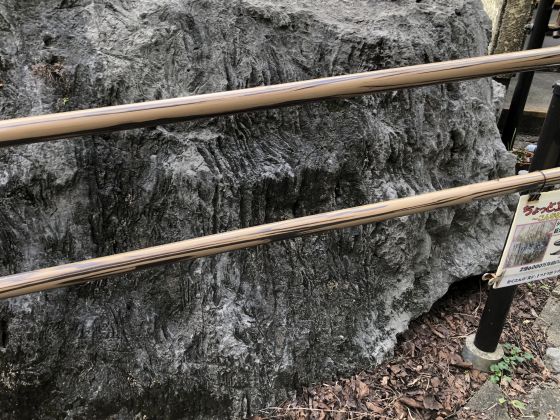
We arrived at the entrance. There were lots of stones laid out for the door.
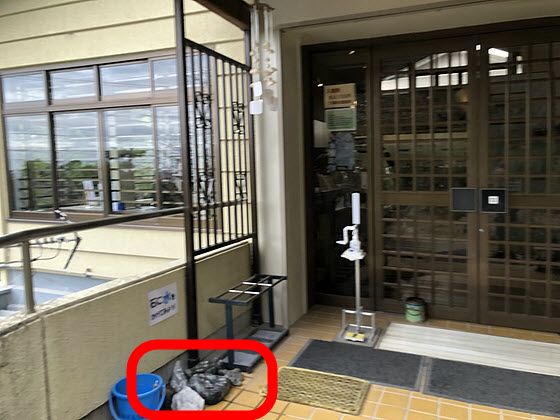
There were stones, a plastic bucket, and a sign that said, 'Try pouring water on the stones!'
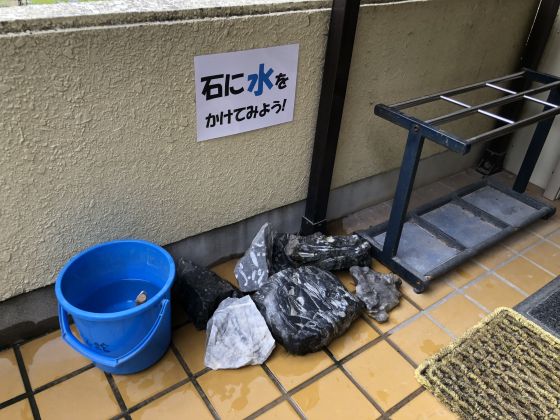
All of the stones contain fossils, and when you pour water on them the dust will clear away, revealing the fossils.
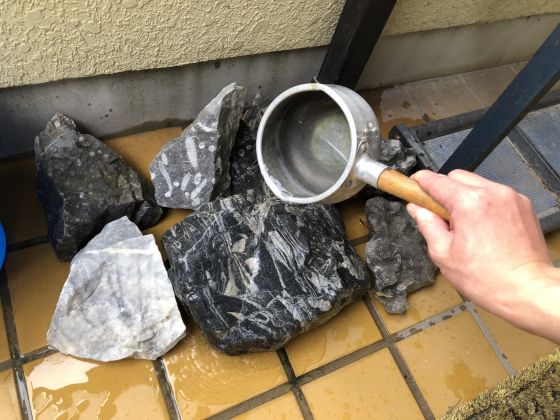
The surface looks like this. Even before we entered the museum, we were already seeing a ton of fossils.
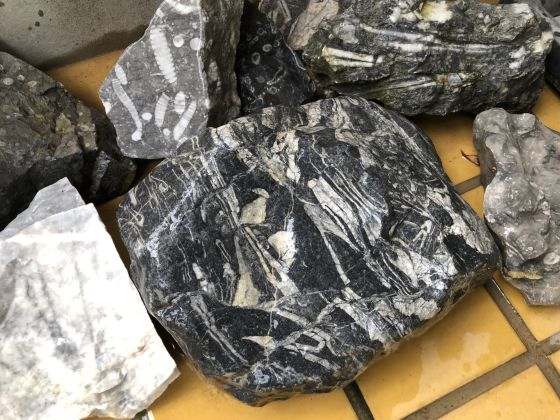
I entered the building and bought an admission ticket for 100 yen.
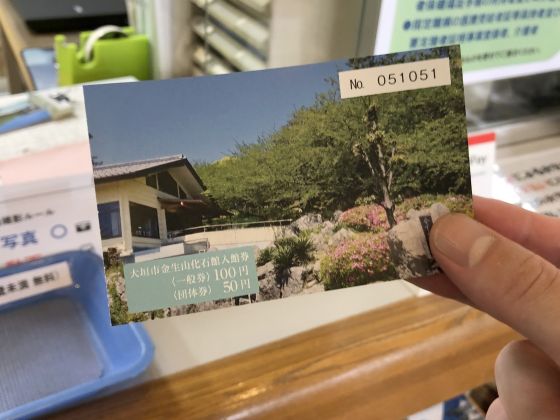
Apparently it's OK to take photos.
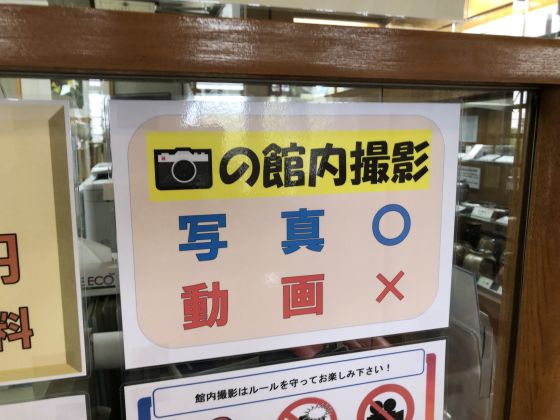
The museum was packed with fossils discovered at Mt. Kinsho, so I took a few photos. This is a crinoid fossil.
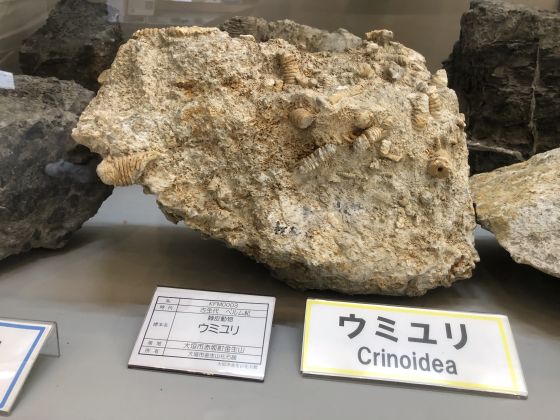
The things you see slithering out from the surface are sea lilies.
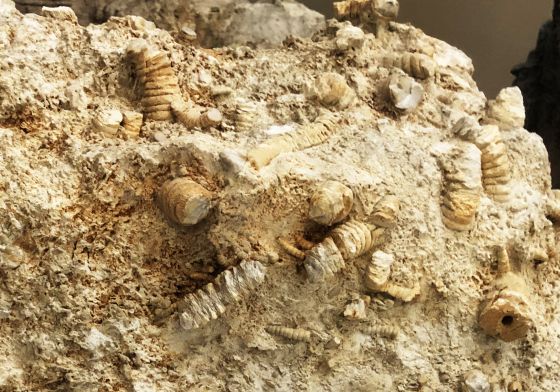
There was also a specimen of a primitive sea lily called the '
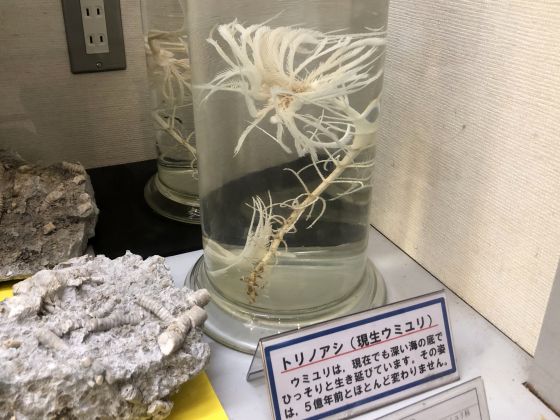
There are also fossils of sea lilies with very thick stems.
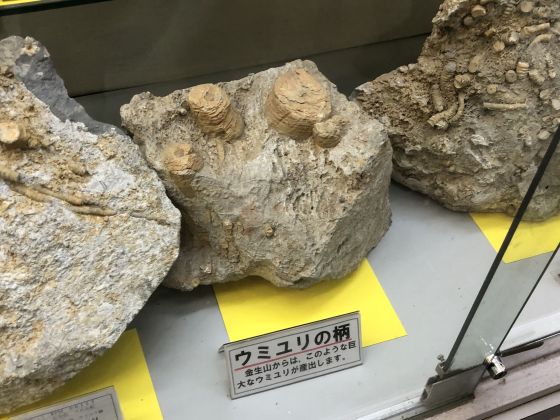
There was also a fossil of the world's thickest sea lily.
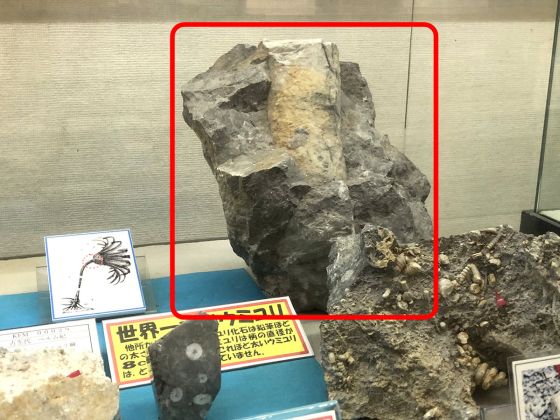
This is a
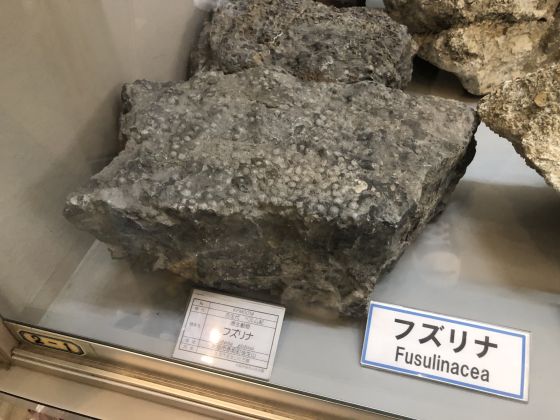
A fossil of part of Sicamaya.
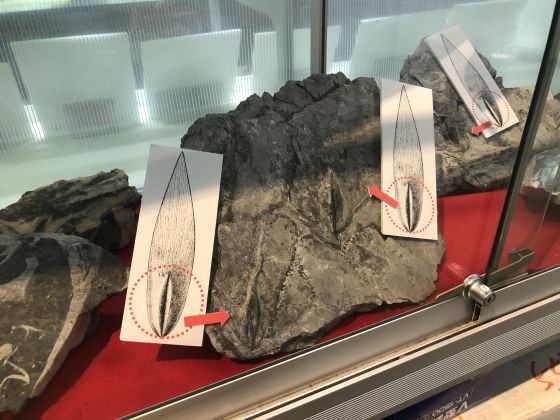
There is also a reconstructed model of '
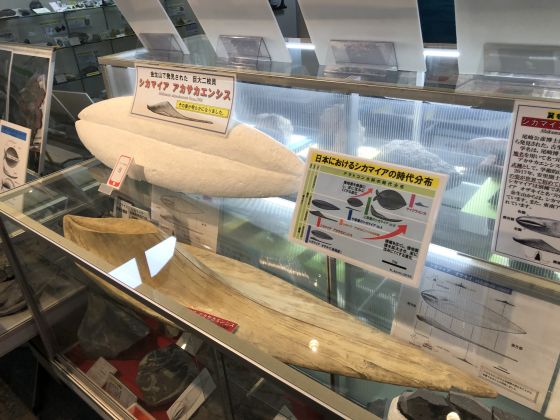
This is a fossil of a giant snail, Akasakiella. It is 5mm thick and 40cm long.
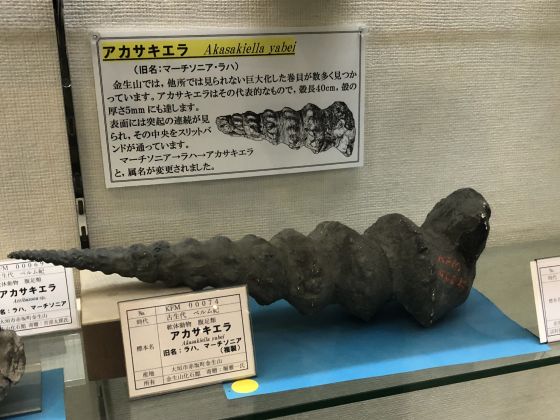
Many gigantic fossils such as Akasakiera and Shikamia that are not found anywhere else have been found on Mt. Kinsho. The reason why so many fossils of gigantic creatures have been found is unclear.
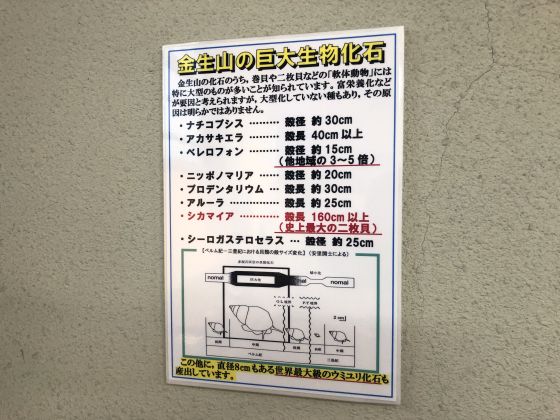
There is also an exhibition corner in the basement.
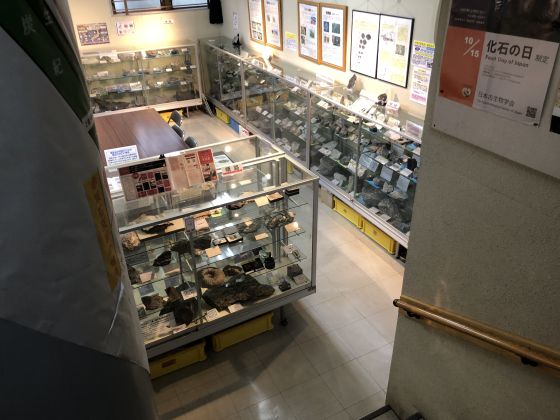
The walls are covered with fossils. The building itself is small, but the fossils are densely displayed, so it's very satisfying.
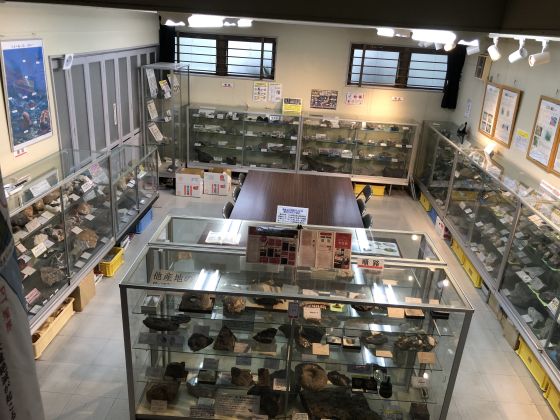
Mt. Kinsho is a mountain located in the inland prefecture of Gifu, but it is said that 260 million years ago it was a coral reef in the southern ocean.
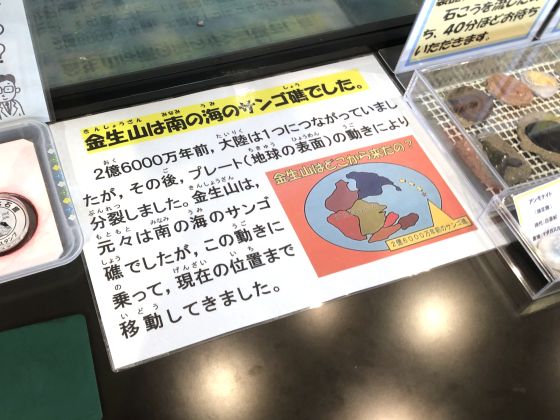
There is also a theory that it was located to the west of
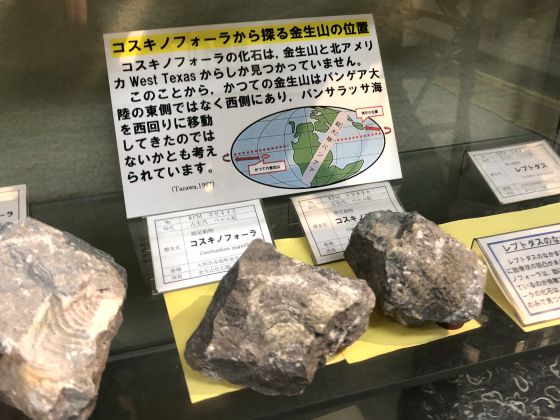
Mt. Kinsho is known as the birthplace of fossil research in Japan. The oldest paper on Japanese fossils is said to be the paper by German scholar Günbel in 1874, which described fossils found on Mt. Kinsho as a new species. Incidentally, there is an anecdote that Günbel discovered the fossil in a stone displayed in the stonework corner when he was viewing a Japanese garden exhibit at the World's Fair held in Vienna in 1873.
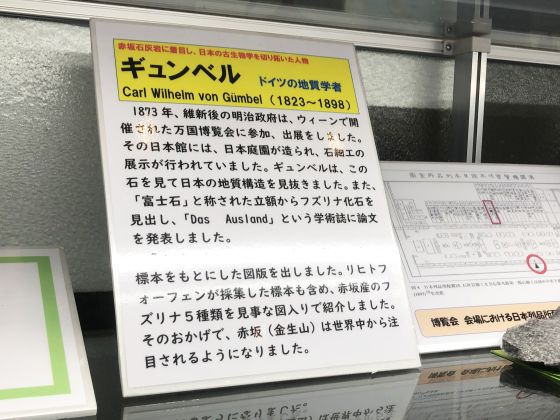
Please note that the Kinshozan Fossil Museum does not display dinosaur fossils. There is a notice saying 'Sorry, we don't have any dinosaur fossils.' Although there are no dinosaur fossils, the museum is packed with huge shellfish fossils and sea lily fossils, and there are even a large number of fossils outside the building, so you will definitely be satisfied with the museum if you go. The admission fee of 100 yen is very good value for money.
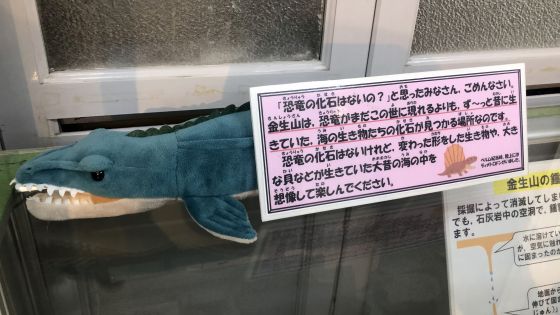
Related Posts:


